Opinion & Analysis
Are Cobra’s F7 Junior One-Length Irons Good for Youth Golf?
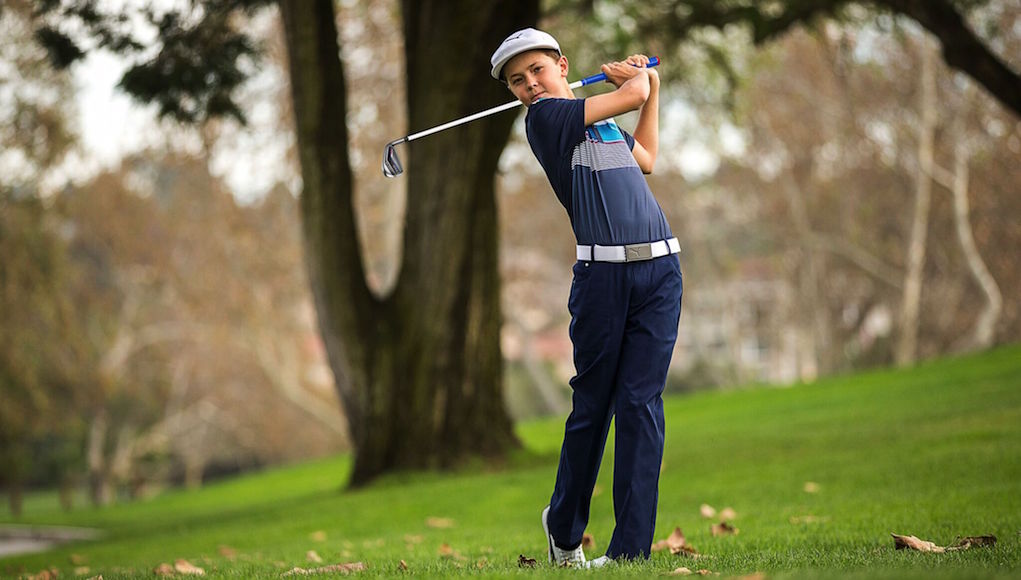
Golf equipment companies that make clubs for junior golfers are in a difficult position. They need to look out for their business by turning profits, developing brand loyalty and ultimately making their customers happy. But these equipment companies also need to look out for the future of the sport, and get clubs in the hands of junior golfers that will properly develop their golf games.
As such, I want to have a conversation about Cobra’s new Junior F7 One irons, which are single-length golf clubs made for juniors aged 13-15 years old, and the possible consequences (negative or positive) of putting these clubs in their hands.
First, I’d like to commend Cobra on making a set of irons that may make the game easier for more junior golfers, and for being bold in its chase to simplify the game. The single-length iron sets were developed by Tom Olsavsky, the Vice President of R&D for Cobra, after thorough testing, study and input from Mike Schy, a proponent of The Golfing Machine theories and Bryson DeChambeau’s longtime swing coach. Although the single-length system is not widely accepted — not yet, at least — the concept of single-length irons is such that a golfer doesn’t need to change his/her swing between irons because they’re all the same length, weight and have the same lie angle. To make the golf ball go different distances, single-length irons clubs use different lofts and head designs. That certainly can simply things.
Junior golf equipment has come a long way from the days of simply cutting down adult sets, or using your father’s hand-me-downs. There are now many different options for golfers of different sizes and strengths, and that’s a wonderful thing. Also, Cobra gave these particular irons serious engineering attention and similar technologies as the adult, one-length sets.
Like the adult versions, the F7 Junior One irons have TechFlo — a technology designed to help the longer irons fly higher and farther — and they also have PwrShell faces, which means they are thinner and more forgiving across the face. The grooves are milled and designed to produce the proper spin for each individual iron. The clubs come stock with Lamkin EPDM REL-Red, White and Blue grips and graphite Fujikura Fuel Junior shafts (36.25 inches in length), and they come in a five-piece set (5-7-9-PW-SW) that sells for $449 available now at retail and online.
I question the effectiveness of buying a single-length club for a junior golfer who’s 13-15 years old — a fairly wide range of physical characteristics there — without getting fit, but that’s another argument for a different day. My particular worry is for junior golfers who plan to take the game seriously, and have hopes of competing in high school and attaining a college scholarship. Along with the benefits, there could be longterm drawbacks of using single-length irons at a young age.
As a former NCAA Division I golfer who used progressive, or “normal” length irons his entire career, I had a mostly positive experience with the single-length irons — for which I was fully fitted — during my experiment for a GolfWRX review. I’ve since switched back to a normal-length set of irons because of the limitations I felt with trajectory and distance control; the more time went on, the more I felt long irons went too low and short irons went too high. My shotmaking was also suffering around the greens.
For me, using single-length irons was an experiment that I underwent by choice, and switching back to “normal” irons was natural because my swing and mentality had developed using progressive-length irons. My fear for junior golfers ages 13-15 who are given a set of single-length clubs is that their swings would be ingrained under the single-length concept… a concept that isn’t necessarily for everyone. Junior golfers in the developing stage of their bodies and swings are impressionable, and switching back from the single-length set into normal length irons later in life could prove difficult. Also, their shotmaking could be sacrificed in the short- and long-run.
I spoke to top-100 fitter Scott Felix of Felix Clubworks, and Ryan Johnson, the 2015 Michigan Amatuer champion and a fitter at Carl’s Golfland, for their expert opinions on the topic. Felix said while the single-length system could be beneficial using the relatively shorter 5 iron in terms of contacting the center of the face more consistently — but not in creating more speed — the longer wedges may take away from touch and feel around the greens. He said while he wouldn’t necessarily recommend single-length irons to a junior golfer, he would evaluate their performance with the clubs and help the junior get what they play the best. Johnson added that the single-length system may be easier since it’s only one swing in theory, but that the system might work best for a one-plane type swing (which The Golfing Machine calls a “zero shift”) and for junior golfers who understand and embrace the concept. As an accomplished player himself, Johnson once tried the one-length system and found difficulty with the short irons and wedges because they flew too high and to the left, and said “I couldn’t even think about hitting a bunker shot with them.”
“I wouldn’t tell a junior golfer or a parent not to (buy a single-length set),” Johnson said. “I’d just give them a rundown of the concept and what it entails.”
Olsavsky, on the other hand, doesn’t see a downside to the single-length system. “If a kid can hit a 7-iron, [he or she] can hit every club in the bag,” he says, and that one-length irons will ultimately put less stress on the mind and body throughout a junior’s life if they stick to one-length irons. He described a short game test that Cobra performed on one-length wedges vs. normal-length wedges, where a group of 2-12 handicappers hit 20- and 30-yard shots, as well as a chip shot and a flop shot. The results of the test showed that shots hit with single-length wedges finished closer to the hole and were more preferred in three of the four locations.
Regardless of performance, however, junior golfers are influenced heavily by what they see on TV or what their friends are doing.
“Since working with Bryson DeChambeau to help bring this concept to life in two adult sets of irons earlier this year, we have had requests from retailers and consumers to offer a set of one-length irons for junior golfers,” Olsavsky said in a press release.
So let’s say a junior’s favorite golfer is Bryson DeChambeau and they see him using single-length irons. Obviously, they ask their parents to buy them a set of single-length irons because it’s “cool.”
Parents should proceed with caution here. If a child wants to compete at a high level, it’s a bigger decision than simply saying, “Oh, this is what the kid says he wants so I’m going to buy it for him.” Let’s remember, DeChambeau himself grew up using a conventional length set of irons and later switched.
That’s not to say single-length is the wrong decision, either. Some kids will absolutely thrive under a single-length system, and in turn have confidence they wouldn’t have otherwise. The game may be simplified and come easier for the junior golfer because of it, and make golf fun.
For others, their development may be stunted. That’s why seeking professional guidance in this circumstance is so crucial.

Cobra has this to say about the performance aspects of the clubs.
“We tested these irons among a wide range of skill levels ranging in age from 13-15 and we found that universally they delivered more consistency and better performance for these younger golfers,” Olavsky said in a press release.
Personally, I don’t doubt that to be the case. In a vacuum, the irons surely perform really well (it’s more of the long-term effects that have me nervous).
Let me make this clear: I’m not bashing Cobra for providing single-length irons as an OPTION for the youth, I’m simply warning parents and junior golfers that the decision to buy these clubs is an important one. It will have lasting effects, whether positive or negative. Before buying a set of single-length irons for a junior golfer, please have this conversation with them under the supervision of a professional fitter or teaching professional.
We don’t want to rob golf of the next Justin Thomas just because he/she idolizes Bryson DeChambeau, or vice versa.
- LIKE36
- LEGIT4
- WOW1
- LOL4
- IDHT4
- FLOP3
- OB5
- SHANK40
19th Hole
Vincenzi’s 2024 Wells Fargo Championship betting preview: Tommy Fleetwood ready to finally land maiden PGA Tour title

The PGA Tour season ramps back up this week for another “signature event,” as golf fans look forward to the year’s second major championship next week.
After two weaker-field events in the Zurich Classic and the CJ Cup Byron Nelson, most of the best players in the world will head to historic Quail Hollow for one of the best non-major tournaments of the year.
Last season, Wyndham Clark won the event by four shots.
Quail Hollow is a par-71 measuring 7,521 yards that features Bermudagrass greens. The tree-lined, parkland style course can play quite difficult and features one of the most difficult three-hole stretches in golf known as “The Green Mile,” which makes up holes 16-18: two mammoth par 4s and a 221-yard par 3. All three holes have an average score over par, and water is in play in each of the last five holes on the course.
The field is excellent this week with 68 golfers teeing it up without a cut. All of the golfers who’ve qualified are set to tee it up, with the exception of Scottie Scheffler, who is expecting the birth of his first child.
Past Winners at Quail Hollow
- 2023: Wyndham Clark (-19)
- 2022: Max Homa (-8)
- 2021: Rory McIlroy (-10)
- 2019: Max Homa (-15)
- 2018: Jason Day (-12)
- 2017: Justin Thomas (-8) (PGA Championship)
- 2016: James Hahn (-9)
- 2015: Rory McIlroy (-21)
Key Stats For Quail Hollow
Strokes Gained: Approach
Strokes gained: Approach will be extremely important this week as second shots at Quail Hollow can be very difficult.
Total SG: Approach Over Past 24 Rounds
- Akshay Bhatia (+1.16)
- Tom Hoge (+1.12)
- Corey Conners (+1.01)
- Shane Lowry (+0.93)
- Austin Eckroat (+0.82)
Strokes Gained: Off the Tee
Quail Hollow is a long course on which it is important to play from the fairway. Both distance and accuracy are important, as shorter tee shots will result in approach shots from 200 or more yards. With most of the holes heavily tree lined, errant drives will create some real trouble for the players.
Strokes Gained: Off the Tee Past 24 Rounds:
- Ludvig Aberg (+0.73)
- Rory McIlroy (+0.69)
- Xander Schauffele (+0.62)
- Viktor Hovland (+0.58)
- Chris Kirk (+0.52)
Proximity: 175-200
The 175-200 range is key at Quail Hollow. Players who can hit their long irons well will rise to the top of the leaderboard.
Proximity: 175-200+ over past 24 rounds:
- Cameron Young (28’2″)
- Akshay Bhatia (29’6″)
- Ludvig Aberg (+30’6″)
- Sam Burns (+30’6″)
- Collin Morikawa (+30’9″)
SG: Total on Tom Fazio Designs
Players who thrive on Tom Fazio designs get a bump for me at Quail Hollow this week.
SG: Total on Tom Fazio Designs over past 36 rounds:
- Patrick Cantlay (+2.10)
- Rory McIlroy (+1.95)
- Tommy Fleetwood (+1.68)
- Austin Eckroat (+1.60)
- Will Zalatoris (+1.57)
Strokes Gained: Putting (Bermudagrass)
Strokes Gained: Putting has historically graded out as the most important statistic at Quail Hollow. While it isn’t always predictable, I do want to have it in the model to bump up golfers who prefer to putt on Bermudagrass.
Strokes Gained: Putting (Bermudagrass) Over Past 24 Rounds:
- Taylor Moore (+0.82)
- Nick Dunlap (+.76)
- Wyndham Clark (+.69)
- Emiliano Grillo (+.64)
- Cam Davis (+.61)
Course History
This stat will incorporate players that have played well in the past at Quail Hollow.
Course History over past 36 rounds (per round):
- Rory McIlroy (+2.50)
- Justin Thomas (+1.96)
- Jason Day (+1.92)
- Rickie Fowler (+1.83)
- Viktor Hovland (+1.78)
Wells Fargo Championship Model Rankings
Below, I’ve compiled overall model rankings using a combination of the five key statistical categories previously discussed — SG: Approach (27%), SG: Off the Tee (23%), SG: Total on Fazio designs (12%), Proximity: 175-200 (12%), SG: Putting Bermuda grass (12%), and Course History (14%).
- Wyndham Clark
- Rory McIlroy
- Xander Schauffele
- Shane Lowry
- Hideki Matsuyama
- Viktor Hovland
- Cameron Young
- Austin Eckroat
- Byeong Hun An
- Justin Thomas
2024 Wells Fargo Championship Picks
Tommy Fleetwood +2500 (DraftKings)
I know many out there have Tommy fatigue when it comes to betting, which is completely understandable given his lack of ability to win on the PGA Tour thus far in his career. However, history has shown us that players with Fleetwood’s talent eventually break though, and I believe for Tommy, it’s just a matter of time.
Fleetwood has been excellent on Tom Fazio designs. Over his past 36 rounds, he ranks 3rd in the field in Strokes Gained: Total on Fazio tracks. He’s also been incredibly reliable off the tee this season. He’s gained strokes in the category in eight of his past nine starts, including at The Masters, the PLAYERS and the three “signature events” of the season. Tommy is a golfer built for tougher courses and can grind it out in difficult conditions.
Last year, Fleetwood was the first-round leader at this event, firing a Thursday 65. He finished the event in a tie for 5th place.
For those worried about Fleetwood’s disappointing start his last time out at Harbour Town, he’s bounced back nicely after plenty of poor outings this season. His T7 at the Valero Texas Open was after a MC and T35 in his prior two starts and his win at the Dubai Invitational came after a T47 at the Sentry.
I expect Tommy to bounce back this week and contend at Quail Hollow.
Justin Thomas +3000 (DraftKings)
It’s been a rough couple of years for Justin Thomas, but I don’t believe things are quite as bad as they seem for JT. He got caught in the bad side of the draw at Augusta for last month’s Masters and has gained strokes on approach in seven of his nine starts in 2024.
Thomas may have found something in his most recent start at the RBC Heritage. He finished T5 at a course that he isn’t the best fit for on paper. He also finally got the putter working and ranked 15th in Strokes Gained: Putting for the week.
The two-time PGA champion captured the first of his two major championships at Quail Hollow back in 2017, and some good vibes from the course may be enough to get JT out of his slump.
Thomas hasn’t won an event in just about two years. However, I still believe that will change soon as he’s been one of the most prolific winners throughout his PGA Tour career. Since 2015, he has 15 PGA Tour wins.
Course history is pretty sticky at Quail Hollow, with players who like the course playing well there on a regular basis. In addition to JT’s PGA Championship win in 2017, he went 4-1 at the 2022 Presidents Cup and finished T14 at the event last year despite being in poor form. Thomas can return as one of the top players on the PGA Tour with a win at a “signature event” this week.
Cameron Young +3500 (DraftKings)
For many golf bettors, it’s been frustrating backing Cam Young this season. His talent is undeniable, and one of the best and most consistent performers on the PGA Tour. He just hasn’t broken through with a victory yet. Quail Hollow has been a great place for elite players to get their first victory. Rory McIlroy, Anthony Kim, Rickie Fowler and Wyndham Clark all notched their first PGA Tour win at Quail.
Throughout Cam Young’s career, he has thrived at tougher courses with strong fields. This season, he finished T16 at Riviera and T9 at Augusta National, demonstrating his preference of a tough test. His ability to hit the ball long and straight off the tee make him an ideal fit for Quail Hollow, despite playing pretty poorly his first time out in 2023 (T59). Young should be comfortable playing in the region as he played his college golf at Wake Forest, which is about an hour’s drive from Quail Hollow.
The 26-year-old has played well at Tom Fazio designs in the past and ranks 8th in the field in Strokes Gained: Total on those courses in his last 36 rounds. Perhaps most importantly, this season, Young is the best player on the PGA Tour in terms of proximity from 175-200 in the fairway, which is where a plurality and many crucial shots will come from this week.
Young is an elite talent and Quail Hollow has been kind to players of his ilk who’ve yet to win on Tour.
Byeong Hun An +5000 (FanDuel)
Byeong Hun An missed some opportunities last weekend at the CJ Cup Byron Nelson. He finished T4 and played some outstanding golf, but a couple of missed short putts prevented him from getting to the winning score of -23. Despite not getting the win, it’s hard to view An’s performance as anything other than an overwhelming success. It was An’s fourth top-ten finish of the season.
Last week, An gained 6.5 strokes ball striking, which was 7th in the field. He also ranked 12th for Strokes Gained: Approach and 13th for Strokes Gained: Off the Tee. The South Korean has been hitting the ball so well from tee to green all season long and he now heads to a golf course that should reward his precision.
An’s driver and long irons are absolute weapons. At Quail Hollow, players will see plenty of approach shots from the 175-200 range as well as some from 200+. In his past 24 rounds, Ben ranks 3rd in the field in proximity from 175-200 and 12th in proximity from 200+. Playing in an event that will not end up being a “birdie” fest should help An, who can separate from the field with his strong tee to green play. The putter may not always cooperate but getting to -15 is much easier than getting to -23 for elite ball strikers who tend to struggle on the greens.
Winning a “signature event” feels like a tall task for An this week with so many elite players in the field. However, he’s finished T16 at the Genesis Invitational, T16 at The Masters and T8 at the Arnold Palmer Invitational. The 32-year-old’s game has improved drastically this season and I believe he’s ready to get the biggest win of his career.
- LIKE4
- LEGIT1
- WOW0
- LOL0
- IDHT0
- FLOP0
- OB0
- SHANK0
19th Hole
Vincenzi’s LIV Golf Singapore betting preview: Course specialist ready to thrive once again

After another strong showing in Australia, LIV Golf will head to Sentosa Golf Club in Singapore looking to build off of what was undoubtedly their best event to date.
Sentosa Golf Club sits on the southern tip of Singapore and is one of the most beautiful courses in the world. The course is more than just incredible scenically; it was also rated 55th in Golf Digest’s top-100 courses in 2022-2023 and has been consistently regarded as one of the best courses in Asia. Prior to being part of the LIV rotation, the course hosted the Singapore Open every year since 2005.
Sentosa Golf Club is a par 71 measuring 7,406 yards. The course will require precise ball striking and some length off the tee. It’s possible to go low due to the pristine conditions, but there are also plenty of hazards and difficult spots on the course that can bring double bogey into play in a hurry. The Bermudagrass greens are perfectly manicured, and the course has spent millions on the sub-air system to keep the greens rolling fast. I spoke to Asian Tour player, Travis Smyth, who described the greens as “the best [he’s] ever played.”
Davis Love III, who competed in a Singapore Open in 2019, also gushed over the condition of the golf course.
“I love the greens. They are fabulous,” the 21-time PGA Tour winner said.
Love III also spoke about other aspects of the golf course.
“The greens are great; the fairways are perfect. It is a wonderful course, and it’s tricky off the tee.”
“It’s a long golf course, and you get some long iron shots. It takes somebody hitting it great to hit every green even though they are big.”
As Love III said, the course can be difficult off the tee due to the length of the course and the trouble looming around every corner. It will take a terrific ball striking week to win at Sentosa Golf Club.
In his pre-tournament press conference last season, Phil Mickelson echoed many of the same sentiments.
“To play Sentosa effectively, you’re going to have a lot of shots from 160 to 210, a lot of full 6-, 7-, 8-iron shots, and you need to hit those really well and you need to drive the ball well.”
Golfers who excel from tee to green and can dial in their longer irons will have a massive advantage this week.
Stat Leaders at LIV Golf Adelaide:
Fairways Hit
1.) Louis Oosthuizen
2.) Anirban Lahiri
3.) Jon Rahm
4.) Brendan Steele
5.) Cameron Tringale
Greens in Regulation
1.) Brooks Koepka
2.) Brendan Steele
3.) Dean Burmester
4.) Cameron Tringale
5.) Anirban Lahiri
Birdies Made
1.) Brendan Steele
2.) Dean Burmester
3.) Thomas Pieters
4.) Patrick Reed
5.) Carlos Ortiz
LIV Golf Individual Standings:
1.) Joaquin Niemann
2.) Jon Rahm
3.) Dean Burmester
4.) Louis Oosthuizen
5.) Abraham Ancer
LIV Golf Team Standings:
1.) Crushers
2.) Legion XIII
3.) Torque
4.) Stinger GC
5.) Ripper GC
LIV Golf Singapore Picks
Sergio Garcia +3000 (DraftKings)
Sergio Garcia is no stranger to Sentosa Golf Club. The Spaniard won the Singapore Open in 2018 by five strokes and lost in a playoff at LIV Singapore last year to scorching hot Talor Gooch. Looking at the course setup, it’s no surprise that a player like Sergio has played incredible golf here. He’s long off the tee and is one of the better long iron players in the world when he’s in form. Garcia is also statistically a much better putter on Bermudagrass than he is on other putting surfaces. He’s putt extremely well on Sentosa’s incredibly pure green complexes.
This season, Garcia has two runner-up finishes, both of them being playoff losses. Both El Camaleon and Doral are courses he’s had success at in his career. The Spaniard is a player who plays well at his tracks, and Sentosa is one of them. I believe Sergio will get himself in the mix this week. Hopefully the third time is a charm in Singapore.
Paul Casey +3300 (FanDuel)
Paul Casey is in the midst of one of his best seasons in the five years or so. The results recently have been up and down, but he’s shown that when he’s on a golf course that suits his game, he’s amongst the contenders.
This season, Casey has finishes of T5 (LIV Las Vegas), T2 (LIV Hong Kong), and a 6th at the Singapore Classic on the DP World Tour. At his best, the Englishman is one of the best long iron players in the world, which makes him a strong fit for Sentosa. Despite being in poor form last season, he was able to fire a Sunday 63, which shows he can low here at the course.
It’s been three years since Casey has won a tournament (Omega Dubai Desert Classic in 2021), but he’s been one of the top players on LIV this season and I think he can get it done at some point this season.
Mito Pereira +5000 (Bet365)
Since Mito Pereira’s unfortunate demise at the 2022 PGA Championship, he’s been extremely inconsistent. However, over the past few months, the Chilean has played well on the International Series as well as his most recent LIV start. Mito finished 8th at LIV Adelaide, which was his best LIV finish this season.
Last year, Pereira finished 5th at LIV Singapore, shooting fantastic rounds of 67-66-66. It makes sense why Mito would like Sentosa, as preeminent ball strikers tend to rise to the challenge of the golf course. He’s a great long iron player who is long and straight off the tee.
Mito has some experience playing in Asia and is one of the most talented players on LIV who’s yet to get in the winner’s circle. I have questions about whether or not he can come through once in contention, but if he gets there, I’m happy to roll the dice.
Andy Ogletree +15000 (DraftKings)
Andy Ogletree is a player I expected to have a strong 2024 but struggled early in his first full season on LIV. After failing to crack the top-25 in any LIV event this year, the former U.S. Amateur champion finally figured things out, finished in a tie for 3rd at LIV Adelaide.
Ogletree should be incredible comfortable playing in Singapore. He won the International Series Qatar last year and finished T3 at the International Series Singapore. The 26-year-old was arguably the best player on the Asian Tour in 2023 and has been fantastic in the continent over the past 18 months.
If Ogletree has indeed found form, he looks to be an amazing value at triple-digit odds.
- LIKE3
- LEGIT3
- WOW1
- LOL2
- IDHT0
- FLOP2
- OB0
- SHANK0
Opinion & Analysis
Ryan: Lessons from the worst golf instructor in America

In Tampa, there is a golf course that boasts carts that do not work, a water range, and a group of players none of which have any chance to break 80. The course is overseen by a staff of crusty men who have succeeded at nothing in life but ending up at the worst-run course in America. However, this place is no failure. With several other local courses going out of business — and boasting outstanding greens — the place is booked full.
While I came for the great greens, I stayed to watch our resident instructor; a poor-tempered, method teacher who caters to the hopeless. At first, it was simply hilarious. However, after months of listening and watching, something clicked. I realized I had a front-row seat to the worst golf instructor in America.
Here are some of my key takeaways.
Method Teacher
It is widely accepted that there are three types of golf instructors: system teachers, non-system teachers, and method teachers. Method teachers prescribe the same antidote for each student based on a preamble which teachers can learn in a couple day certification.
Method teaching allows anyone to be certified. This process caters to the lowest caliber instructor, creating the illusion of competency. This empowers these underqualified instructors with the moniker of “certified” to prey on the innocent and uninformed.
The Cult of Stack and Jilt
The Stack and Tilt website proudly boasts, “A golfer swings his hands inward in the backswing as opposed to straight back to 1) create power, similar to a field goal kicker moving his leg in an arc and 2) to promote a swing that is in-to-out, which produces a draw (and eliminates a slice).”
Now, let me tell you something, there is this law of the universe which says “energy can either be created or destroyed,” so either these guys are defying physics or they have no idea what they are taking about. Further, the idea that the first move of the backswing determines impact is conjecture with a splash of utter fantasy.
These are the pontifications of a method — a set of prescriptions applied to everyone with the hope of some success through the placebo effect. It is one thing for a naive student to believe, for a golf instructor to drink and then dispel this Kool-Aid is malpractice.
Fooled by Randomness
In flipping a coin, or even a March Madness bet, there is a 50-50 chance of success. In golf, especially for new players, results are asymmetric. Simply put: Anything can happen. The problem is that when bad instructors work with high handicappers, each and every shot gets its own diagnosis and prescription. Soon the student is overwhelmed.
Now here’s the sinister thing: The overwhelming information is by design. In this case, the coach is not trying to make you better, they are trying to make you reliant on them for information. A quasi Stockholm syndrome of codependency.
Practice
One of the most important scientists of the 20th century was Ivan Pavlov. As you might recall, he found that animals, including humans, could be conditioned into biological responses. In golf, the idea of practice has made millions of hackers salivate that they are one lesson or practice session from “the secret.”
Sunk Cost
The idea for the worst golf instructor is to create control and dependency so that clients ignore the sunk cost of not getting better. Instead, they are held hostage by the idea that they are one lesson or tip away from unlocking their potential.
Cliches
Cliches have the effect of terminating thoughts. However, they are the weapon of choice for this instructor. Add some hyperbole and students actually get no information. As a result, these players couldn’t play golf. When they did, they had no real scheme. With no idea what they are doing, they would descend into a spiral of no idea what to do, bad results, lower confidence, and running back to the lesson tee from more cliches.
The fact is that poor instruction is about conditioning players to become reliant members of your cult. To take away autonomy. To use practice as a form of control. To sell more golf lessons not by making people better but through the guise that without the teacher, the student can never reach their full potential. All under the umbrella of being “certified” (in a 2-day course!) and a melee of cliches.
This of course is not just happening at my muni but is a systemic problem around the country and around the world, the consequences of which are giving people a great reason to stop playing golf. But hey, at least it’s selling a lot of golf balls…
- LIKE18
- LEGIT2
- WOW0
- LOL4
- IDHT1
- FLOP4
- OB1
- SHANK24
-

 19th Hole2 weeks ago
19th Hole2 weeks agoJustin Thomas on the equipment choice of Scottie Scheffler that he thinks is ‘weird’
-

 19th Hole2 weeks ago
19th Hole2 weeks ago‘Absolutely crazy’ – Major champ lays into Patrick Cantlay over his decision on final hole of RBC Heritage
-

 19th Hole3 weeks ago
19th Hole3 weeks agoReport: LIV Golf identifies latest star name they hope to sign to breakaway tour
-

 19th Hole3 weeks ago
19th Hole3 weeks agoBrandel Chamblee has ‘no doubt’ who started the McIlroy/LIV rumor and why
-

 19th Hole2 weeks ago
19th Hole2 weeks agoLET pro gives detailed financial breakdown of first week on tour…and the net result may shock you
-

 Equipment3 weeks ago
Equipment3 weeks agoJason Day on his recent switch into Srixon ZX5 and ZX7 Mk II irons
-

 19th Hole5 days ago
19th Hole5 days agoGary Player claims this is what ‘completely ruined’ Tiger Woods’ career
-

 Whats in the Bag1 week ago
Whats in the Bag1 week agoTeam McIlowry (Rory McIlroy, Shane Lowry) winning WITBs: 2024 Zurich Classic





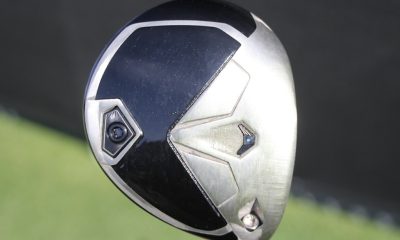

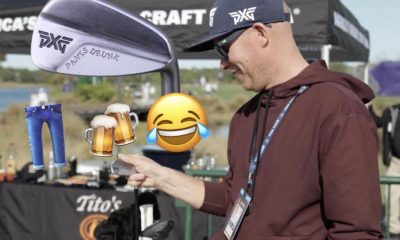

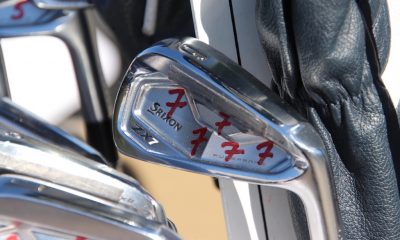

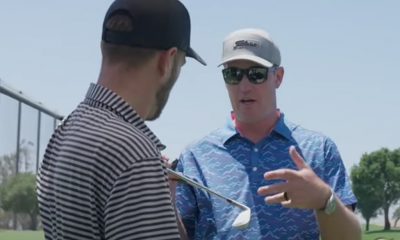















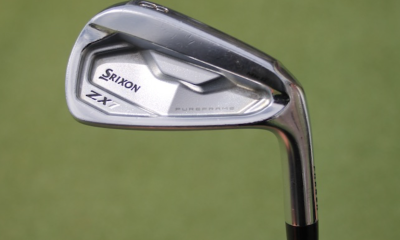



Bruce
May 19, 2017 at 9:21 am
Written from an OEM perspective; that is, throw away a good idea to preserve the business profits. Quit bringing up red herring non-issues for marketing reasons. If we all played single length and someone introduced variable length, what an uproar that would cause. Golf is a marketing driven business: very very little science (I am a PhD Mechanical Engineer who understands golf science). Single length irons make good sense. Multiple length irons and swing weight matching HAVE NO BASIS IN SCIENCE. These are all marketing.
Mat
May 20, 2017 at 7:29 pm
Actually, multi-length irons have plenty of basis in science. They use length of shaft as one of two main properties that provide distance gaps between irons. By doing this, they can achieve a more consistent descent angle, apex, and distance range within a set.
These are the issues that SLI are working hard to overcome. There have been advancements, but that doesn’t mean they’re perfect. But for a ME PhD to go on about how MLI have no basis is ignorant.
Dave R
Apr 26, 2017 at 10:07 pm
Ken I think you need a hug.
Eddie
Apr 26, 2017 at 6:32 pm
Talent will always trump equipment. No piece of equipment will ever make or break someone’s golf career.
The dude
Apr 26, 2017 at 4:55 pm
What I don’t understand….why it takes someone forever to share their thoughts on a post. If it’s longer than 5 lines…just read the last sentence….
Scott
Apr 26, 2017 at 4:06 pm
Just because you have a different grip with different clubs does not mean everyone else does. And just how many 6′ 4″ juniors do you come across? Wow.
Philip
Apr 26, 2017 at 2:29 pm
They are if you are an OEM that wants to start a new batch of players that will not have an enormous supply of cheaper used clubs to pick from once they grow up and can spend their own money.
cody
Apr 26, 2017 at 1:18 pm
I have a 5 year old girl that i would like to get into golf. I will be honest i dont see a donw side to single length irons to start with. Are you all really saying that a kid cannot switch to more traditional clubs at some point?? c’mon man!!!
Mat
Apr 26, 2017 at 4:09 am
Navel gazing. If a kid is starting out, they get a lower learning curve. Fantastic.
What makes anyone think that the equipment they had as a 14 year old will affect them as an adult? Seriously, if you’re talking about things like apex height and swing weight to a 14 year old, not only is it a relevant conversation, let them choose themselves!
This product is designed for Daddy Upper-middle-class to give to his kid as a starter set that does not suck. This is not, at all, for serious kids. The serious kid MIGHT strip the crap shaft and play something else if they want SLI, but you’re talking a few very good kids with parental bankroll.
Arguing against quality options for kids is not growing the game. It’s the opposite.
AussieAussieAussie
Apr 26, 2017 at 12:35 am
I still can not understand why so many people hate the idea of single length irons? If a kid starts out playing golf with a single length set in years to come- when they have made them for the 3-5yr old age groups, then he or she will know no different than to use single length, to them varying length could be a foreign and ridiculous concept. Ultimately we want to as golfers grow the game- however that be. Relaxed dress codes, cheaper big name brand clubs more realist available, so why not just embrace the change, I’m sure hybrids and lob wedges were seen as a fad at the time of establishment? Yet here we are with most of us having one or both in our bag?! If one length works great, if it doesn’t that’s also fine! I wouldn’t expect you all to go swing like Jim Fuyrk just because it works for him. It’s not likely to work for you but no one begrudges him his success as a result of it?!
Ken
Apr 26, 2017 at 12:09 am
I bought a set of Tommy Armour EQLs many years ago and got rid of them for that exact reason. I couldn’t use my 7 iron left hand grip for the other clubs and particularly for the low loft clubs. Junior golfers who try to use these clubs will limit their progress and likely never make it into the pro tours.
Scott
Apr 26, 2017 at 4:04 pm
That is quite a leap to think that someone starting the game should not start with an easier system, then move into a different set that may work better for them down the road. I started with blades and persimmon woods – certainly a world of difference over today’s equipment.
Andrew you could not be any more wrong.
Scott
Apr 26, 2017 at 4:04 pm
Ken,
As if you could even know that.
Prime21
Apr 25, 2017 at 9:07 pm
It’s like everything else in golf, it will work for some, not for others. Hopefully Cobra is willing to supply a Demo Set so that Juniors could test them out prior to purchasing. Wishful thinking, but a thought!
Ken
Apr 26, 2017 at 12:12 am
Good junior golfers will never adapt to the single length/single shaft lie clubs because it will be too frustrating for younger minds to go through the trial and error phase of conversion.
Scott
Apr 26, 2017 at 4:10 pm
Ken,
Juniors are probably the BEST at going through a learning phase because they can look at things with an open mind and have not been influenced by people such as yourself.
RI_Redneck
Apr 25, 2017 at 8:48 pm
IMHO:
Shafts should have been steel.
Heads should have adjustable weights to adjust for longer lengths for varying heights and as the kid grows.
Price should be lower (steel shafts hep here).
It would have AT LEAST offered length options based on the kids height. Overlooking this greatly hamstrings Cobra’s ability to market these to the young masses. 13-15 yr olds height can vary A LOT. Good concept, but poor marketing.
BT
Steve
Apr 25, 2017 at 2:11 pm
Why is nobody complaining about the insane cost? This is at least at the same cost as a set of regular irons $90 per. How can that ever be good for junior golf?
mvhoffman
Apr 25, 2017 at 2:00 pm
I just have a feeling that these will continue to be developed. Players will soon start to play these from the start of their golf “career”. The USGA will wait, and wait, and wait…. and wait… just like they did with the belly putter, and then find a loophole to take these away and destroy more careers… I’m going to start a thread on this.
Ken
Apr 26, 2017 at 12:16 am
Parents who buy such clubs for their aspiring amateur golfer and hopefully a golf scholarship are only trying to cover up the swing faults of their child. That’s the only reason an adult will buy them too. An expensive band-aid remedy for a poor swing with regular clubs.
Brandon
Apr 26, 2017 at 4:58 pm
Ok, you can say whatever you want, but don’t you even dare thinking about using a putter that isn’t a blade. On that note, trade in your 460 cc driver for a good old fashioned steel shaft 975D driver, as current day drivers are also an “expensive band-aid for a poor swing”.
Tom 1
Apr 25, 2017 at 11:24 am
Yes